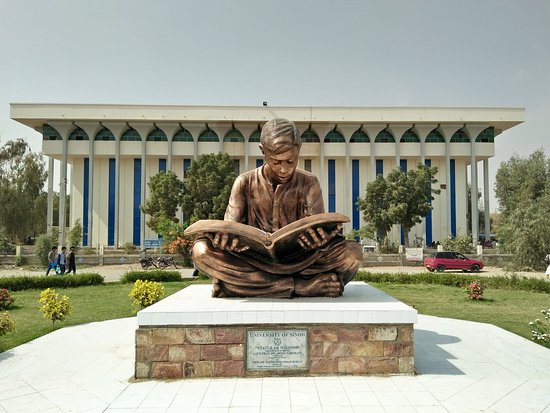
Sindh University is an undeleted image in its graduates’ minds. It resurfaces when an old student cleans the dust from their books of university days, or suddenly finds photographs from yesteryear, or hears songs that were popular in those days.
Zaffar Junejo
Since the 1950s, among the majority of educated youth of the region, ‘Sindh University,’ ‘Jamshoro,’ ‘patriotism,’ ‘revolution,’ and ‘Sindh’ have become synonymous words. However, some Sindhi writers are of the view that uttering ‘Sindh University’ creates an unexpressed feeling, at least some of which is ambivalent in nature. One romantic poet believes that in Sindhi there is only one word ‘Sik’ that is capable of expressing the feelings of Sindh University graduates. This Sindhi word can be described as having meanings such as ‘nostalgia,’ ‘longing’ and ‘reminiscences.’
Sindh University is an undeleted image in its graduates’ minds. It resurfaces when an old student cleans the dust from their books of university days, or suddenly finds photographs from yesteryear, or hears songs that were popular in those days. Whenever such a situation arises, the memoirs of old days roll back. Sindh University moulds people in a specific way. Therefore, their memories flip-flop in two shades – cheerful and melancholic. In such a frame of mind, a considerable number of novels, short-stores and poems have been written to depict the scenes of longing, love, and rejection. Even today, the seniors at the Sindh University’s Jamshoro campus suggest that their juniors read Tariq Abro’s novel Rahji Wayal Manzar (Unforgivable Panorama). In long winter nights at the hostels, some boys and girls read it in bed.
Another novelist Munir Ahmed Chandio has written a trilogy on campus life. The plots of novels and characters revolve around daily lives on the campus. Here, the characters and their interactions are placed in the socio-cultural milieu of relevant time periods.
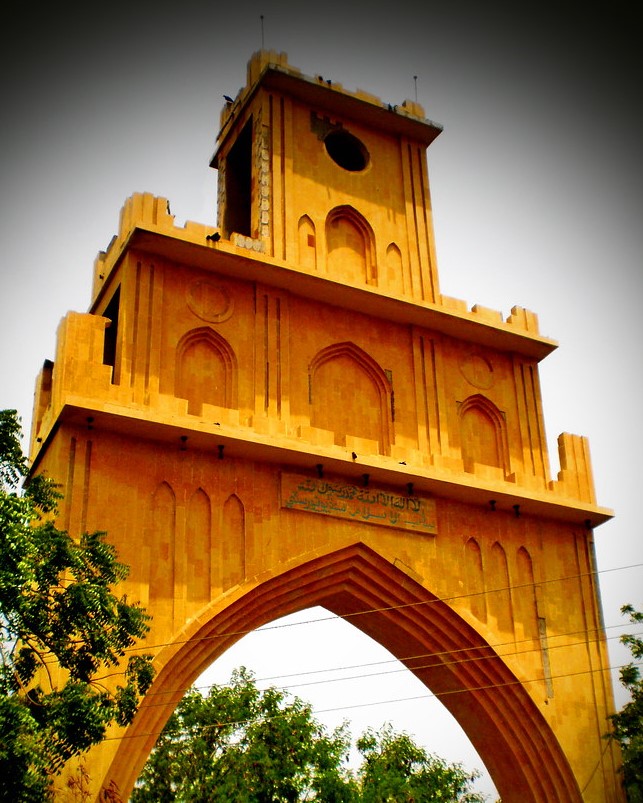
Until now, no research has been published on how Sindh University melted tribal identities into a single identity – that of a Sindhi nation; how the campus life carved out social spaces for women; how the university’s everyday life shaped rural students’ personalities; how social interaction encouraged love-marriages among different castes and surnames; and how patriotism diluted religious and factional identities
Afterwards, Sindh University became new genre in Sindh literature, and in a short span of time novels started appearing. A few years back, Sindh University Men Gum Theyal Khawab (Lost Dreams at Sindh University) and Patharan Jo Shaher (City of Stones) were published.
Likewise, there are a lot of poems about Sindh University. Haleem Baghi’s anthology entitled Arre Shahr-e Jana’n (O City of the Beloved), Dr. Mushtaq Pull’s poem Jamshoro Asanju Piren Jo Shahir (Jamshoro, my Beloved’s city) have become representative of such verse. On the other hand, Akash Ansari’s poem Aseen Bas Rahya Seen Adhora Adhora (Alas! We remained incomplete) depicts an era.
However, there is a gap in our understanding of this institution. Until now, no research has been published on how Sindh University melted tribal identities into a single identity – that of a Sindhi nation; how the campus life carved out social spaces for women; how the university’s everyday life shaped rural students’ personalities; how social interaction encouraged love-marriages among different castes and surnames; and how patriotism diluted religious and factional identities – Hindu, Muslim, Christian, Shia, Sunni, and so on. I am of the view that such research is long overdue.
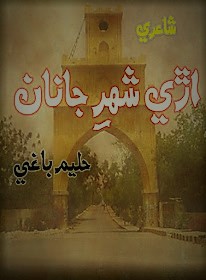
There is no comprehensive document that could help us to understand how the idea of Sindh University evolved and how it was realized. Generally, it is believed that Persram Jethamal was the first person who floated the idea that Sindh needs a separate university. The idea that Sindh should have a separate university formally came under discussion when the question of Sindh’s separation from the Bombay Presidency arose. One point considered by the assessment committee was: “Whether, and if so, what affliction should be made with the existing High Court, University, Medical, Science, and Veterinary, Forest, Engineering, Agriculture or other institutions in any other province.”
The enquiry committee’s first recommendation was that Sindh has limited resources, therefore it should continue the old arrangement – its colleges should be affiliated with Bombay University. However, another paragraph stated that Sindh University seems like a “dream,” if learning is linked with liberty and intellectual environment. The committee doubted as to how liberal and intellectually conducive the environment could be in Sindhi society, with illiteracy rife across communal lines; where landlords had secure ownership of land, and they were not willing to approve tenancy rights to their haris (peasants); government organizations and other bodies had systemized corruption; agriculturists were indebted, not for bad weather, but due to their socio-cultural habits and practices; and the majority’s businesses, properties, lives, and honor were insecure due to a high crime rate.
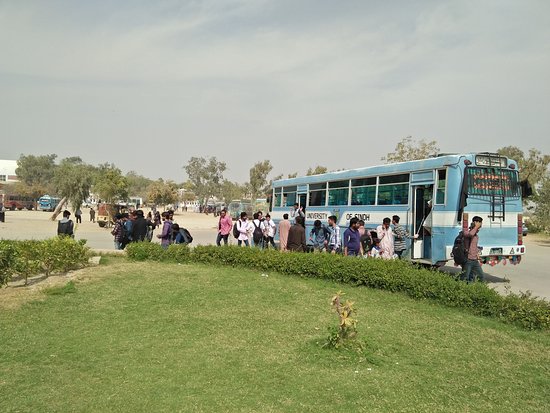 Let the reader consider, for a moment, the history of disparity: we see that Sindh was considering its own university in 1940, and Punjab was already enjoying the benefits of such an institution from 1882!
Let the reader consider, for a moment, the history of disparity: we see that Sindh was considering its own university in 1940, and Punjab was already enjoying the benefits of such an institution from 1882!
The committee pointed out the all these ill elements in Sindhi society were not isolated. All these elements were interlinked. The committee concluded that the outcome was the prevalence of serious moral and intellectual deficiencies in Sindh. However, there was agreement that provision of higher education might change things. It was also noticed that Bombay University’s only tools to shape Sindhi students were syllabus and conduct of examination. The graduates thus produced were not beneficial to the general public. Therefore, the committee stated that Bombay University’s syllabus, textbooks and reading materials lacked “Sindh’s voice.” In addition to that, Bombay University was manufacturing Sindhi students rather than refining and shaping them to tackle Sindh’s specific problems. These graduates could only be consumed in government jobs, and their ideal place was in clerical positions.
that the Sindh Government should come up with the plan for a university which could meet Sindh’s cultural demands, and it should also align itself with the cause of Sindh’s separation from Bombay Presidency. The committee suggested that when the parliament decides on Sindh’s separation, then immediately founders should be sought out who could donate some amount to help create such a prime institution. Afterwards, it was decided, two scholars of repute should be engaged. One should be an ‘adviser’ and the other should be ‘joint adviser.’ Later on, it was decided, the ‘adviser’ should be appointed as the ‘rector’ and ‘joint adviser’ should be retained as a professor of English. The committee also proposed that the professor should be an Englishman. It was further stipulated that those persons shouldn’t be young men, but their enthusiasm should be like that of young men! Other suggested qualities were high academic distinction and educational experience, and the capacity to inspire.
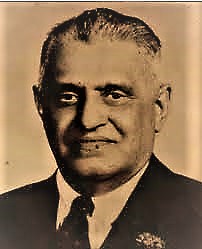
Moreover, it was also suggested that Sindh University should be located near Karachi, but not within the limits of Karachi itself. An added point was that for a certain number of years, Sindh’s university should retain its affiliation with the Bombay University, and establish an examination body like the latter.
Afterwards, Muhammad Ayub Khuhro also thought that Sindh must have its own university. But, Sir Hugh Dow (1886 – 1978) disputed this. The meeting between the two resulted in a strained relationship. Later, the Sindh University Committee was appointed under the Sindh Government Resolution, N0. 607-B. /40 (dated 24th June, 1940).
Let the reader consider, for a moment, the history of disparity: we see that Sindh was considering its own university in 1940, and Punjab was already enjoying the benefits of such an institution from 1882! Sindh, thus, was 58 years behind, when considered in terms of trained human resources.
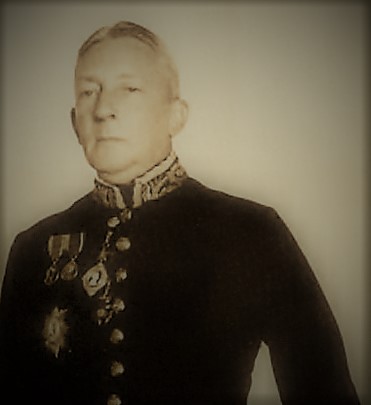
It must be realized that before the separation of Sindh from Bombay, the registered number of graduates was only 166. The deficiency in human resources affected Sindh’s development and its ongoing projects. This compelled the officials to recruit human resources from other provinces. At that time, most staff was recruited from Punjab and Bihar. A majority of them were engaged in the railways and the police department. These staff from other provinces also invited and facilitated their relatives, friends and villagers in job-hunting. As a result, the concentrated employment in a specific sector created a different culture and specific interest groups. In this process, nepotism took root in the departments.
Now, nepotism, corruption and inefficiency have shaped themselves as an institutional norm. Common people are shocked that such a system has adapted itself into a self-sustaining form, and it operates quite independently. (Continues)
______________________
 Dr. Zaffar Junejo is Research Scholar, Department of History University of Malaya, Malaysia. Mr. Junejo apart from scholarly contribution also writes for popular media. He could be accessed at: Email junejozi@gmail.com, Cell/WhatsApp +92 334 045 5333 Skype Zaffar.Junejo Facebook facebook.com/zaffar.junejo
Dr. Zaffar Junejo is Research Scholar, Department of History University of Malaya, Malaysia. Mr. Junejo apart from scholarly contribution also writes for popular media. He could be accessed at: Email junejozi@gmail.com, Cell/WhatsApp +92 334 045 5333 Skype Zaffar.Junejo Facebook facebook.com/zaffar.junejo
Courtesy: The Friday Times Naya Daur Lahore (Published on August 21, 2021)